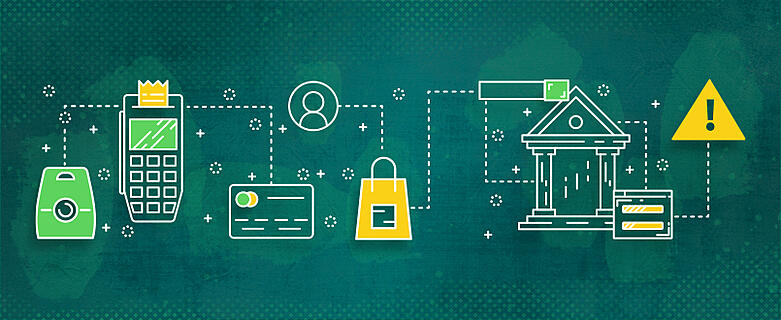News

Chargeback Defense: A Winning Game Plan to Tackle Chargebacks
There are few things retailers dislike more than having to deal with chargebacks, but they'd do well to remember that they stem from good intentions. Government introduced chargebacks to give consumers a way to fight back against fraud and unfair treatment, but the pendulum has swung the other way in many cases. Now, it's common for consumers to file chargebacks instead of applying for a standard refund—it's generally easier and quicker to go through their banks. Although this boosts consumer confidence, it also means merchants face extra costs and admin.
After their customers file chargebacks, retailers are responsible for proving a transaction was legitimate—meaning the customer made the purchase of their own accord and it met their expectations. Unfortunately, there are times when merchants aren't able to produce the evidence needed, even if a chargeback was illegitimate. The solution? Focusing on prevention.
Here's a breakdown of everything retailers need to know about chargeback defense, ensuring they can minimize the number of disputes they receive.
Know Your Risk
It's easy to dismiss chargebacks as a trivial issue, but they can ultimately stop a business from continuing to operate. After accounting for all the additional costs incurred, chargebacks amount to two to three times more than the original value of the purchase.
Even worse, payment processors keep a close eye on how many chargebacks their account holders rack up. If the number rises too high, retailers risk restrictions—or even having their account closed down. Although there's some variation between different banks and card networks, the threshold is usually set at around 100 chargebacks a month (or 1% of all transactions).
Regardless of whether businesses meet this threshold, their acquiring bank will assess their activities to classify them as low, medium, or high risk. Here are some of the factors taken into account:
-
Industry
-
Billing practices
-
Marketing strategies
-
General reputation
-
Customer service practices
-
Delivery time
A company's risk level determines which kinds of chargeback prevention strategies will be the most useful.
Get to the Root
Without addressing the root cause of disputes, it's practically a given that more will be on the way. Therefore, the path to chargeback defense starts by figuring out the root causes behind disputes.
How can retailers take action? One place to start is paying attention to chargeback reason codes, which reveal why the customer filed a dispute. Although some consumers might give inaccurate reasons if they're filing chargebacks inappropriately, checking a reason code often provides a strong signal of what a business needs to improve.
For instance, a firm might realize that the bulk of their chargebacks come from authentication issues, which is a clear signal to change their website's checkout page, or even the checkout process itself. On the other hand, if customer dissatisfaction is the main culprit, altering the return policy is a more appropriate response.
Calculate the True Cost
As we've seen already, the true cost of chargebacks goes far beyond the value of the original transaction. It's also essential to account for the following charges:
-
Transaction fees incurred from the original purchase (from the payment processor)
-
Costs related to marketing, selling, and shipping the item
-
Chargeback fees after the dispute is raised (from the bank)
Many retailers fail to realize just how much these costs add up to—they're far more than just a regular "cost of doing business." In fact, the cost of chargebacks generally adds up to at least twice the value of the original transaction.
Put Prevention into Practice
Waiting until a chargeback arrives to fight against it is the wrong approach—whether a dispute ends up being successful or not, the process will result in costs, admin, and significant damage.
Instead, businesses should turn their attention to chargeback prevention. This involves four steps:
-
Providing great customer service. Even when things do go wrong, excellent customer service plays an important role in minimizing the damage. If customers can talk to a helpful representative straight away, they won't need to turn to chargebacks as a last resort.
-
Offering smooth, efficient processes. Although customers accept that the occasional delay or mistake is inevitable, there's only so much they can take. If these problems become too regular or result in too much inconvenience, they may file a dispute.
-
Fulfilling orders quickly. After making a purchase, customers want to receive their item quickly—or at least know when it will arrive. Prompt shipping and clear communication are essential, especially if there are any potential delays.
-
Setting the right expectations. A major cause of chargebacks is consumers being disappointed because they feel the product or service they received didn't match its description.
However, following these steps can be tougher than it sounds. That's where chargeback prevention tools come in.
Chargeback prevention alerts immediately notify retailers when a customer files a dispute, allowing them to take action quickly and easily—often reversing the dispute or resolving the problem.
Another important defense mechanism is 3D Secure technology, which authenticates online transactions to cut down on fraud, card theft, and authentication errors. There are other similar services available.
All of the tools named above actively prevent chargebacks rather than simply waiting until they're filed to take action, which is far more effective and beneficial.
When to Enlist Help
If the idea of overseeing all the processes and tools outlined above sounds overwhelming, it might be time to outsource. A chargeback management company can help by managing the workload—although the costs might not outweigh the benefits for all firms, this is an essential step for retailers approaching their chargeback threshold.
Instead of a firm's employees having to interpret reason codes, come up with representment strategies, or figure out prevention methods themselves, it makes sense to hand all that over to trained experts.
A winning game plan to tackle chargebacks and avoid excessive revenue losses is to shift from a chargeback defense strategy involving a constant uphill struggle against disputes to being more proactive about prevention.
The Right Chargeback Defense Solutions for Your Business
Resolving chargebacks can be a tough process for merchants to navigate. Fighting them means knowing which ones you can fight and how to fight them, and then overseeing that whole process from start to finish. To prevent them from happening in the first place, you have to know why you're getting them, and that means analyzing large amounts of chargeback data.
Very few merchants have the time or resources to become chargeback defense experts on top of doing everything else they need to do to stay competitive in today's marketplace. That's where outsourcing chargeback services and having the right management software that can automatically and intelligently handle your chargeback-related tasks can be such a great help.
MidMetrics provides all of the essential chargeback defense solutions—along with a full suite of our own proprietary chargeback tools, including Management Dashboards, In-Depth Analytics, and On-Demand Reports. We also provide third-party services like Ethoca alerts and Verifi CDRN alerts and RDR. This gives you a comprehensive platform for fighting chargebacks and defending your merchant accounts, all for one price.
How much would it cost to cobble all these services together from different providers—and how effective would they be? MidMetrics is expertly designed to be easy to use, easy to integrate with your existing systems, and robust enough to provide actionable insights for every merchant's chargeback situation.
Want to see MidMetrics in action? Book a demo with one of our chargeback specialists today.
Putting together a chargeback prevention strategy that affords sufficient protection can be daunting, as many different issues can lead to chargebacks. Not sure where to begin? We've got answers for you in this helpful guide, Chargeback Prevention: A Recipe for Healthy Merchant Accounts.










